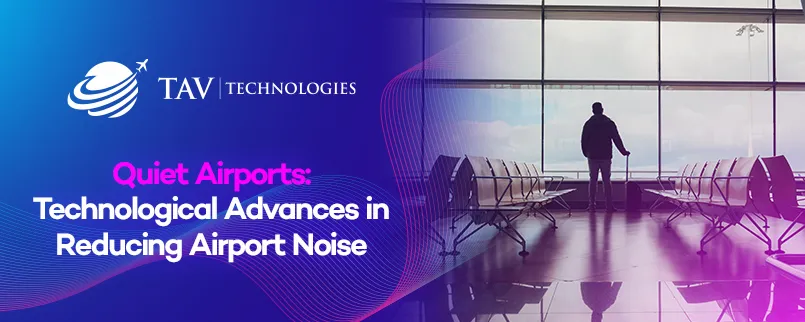
Jul 2024
Airport noise is a significant concern for both nearby communities and airport passengers. The sound of airplanes taking off and landing can disrupt daily life, affecting sleep, health, and overall well-being. Inside the airport, excessive noise can impact the travel experience, making it less pleasant and more stressful for passengers. This issue is significant for airports as they strive to balance operational needs with community and passenger expectations. To address these challenges, airports increasingly turn to advanced technologies designed to reduce noise pollution outside and inside the terminal.
Addressing Noise Challenges
Airports face several challenges related to noise management. The impact of noise extends beyond airport boundaries, affecting residential areas and wildlife habitats. Inside the terminal, noise from aircraft operations, ground handling equipment, and passenger activities can create a loud and chaotic environment. Additionally, varying regulations across different regions can complicate the implementation of standardized noise reduction strategies. Managing the local community's expectations while maintaining efficient airport operations also adds to the complexity. Recognizing the negative effects on sleep, health, and overall well-being, regulatory agencies worldwide have established guidelines and noise abatement procedures to minimize disturbances and protect community and passenger .
Technological Solutions for Noise Reduction
Technological advancements are crucial in mitigating airport noise both outside and inside the terminal. Modern aircraft engines are engineered to be quieter and more fuel-efficient, reducing noise levels and emissions. Airports use sound barriers, better insulation, and smart landscaping to limit noise spreading to nearby areas. Inside the airport, noise-reducing materials, soundproofing, and quiet zones create a more pleasant environment for travelers. These solutions are integrated by airports to create more pleasant passenger zones. Advanced noise monitoring systems provide real-time data, enabling adjustments to operational practices and flight paths to minimize noise impacts on surrounding neighborhoods and within the airport premises. Additionally, many airports are creating designated quiet zones and lounges where passengers can relax away from terminal noise, with comfortable seating and soundproofing features providing a peaceful environment.
Benefits of Noise Reduction
Implementing noise reduction technologies yields multiple benefits for airports, local communities, and passengers. For residents living near airports, reduced noise levels contribute to a more peaceful environment, enhancing quality of life and improving sleep patterns. Inside the airport, lower noise levels can reduce stress and enhance the overall travel experience for passengers. Effective noise management also enhances the reputation of airports, fostering positive relationships with neighboring communities, regulatory authorities, and travelers. Furthermore, compliance with noise regulations helps airports avoid penalties and supports sustainable operational practices.
Community and Passenger Engagement
Engaging with local communities is crucial for successful noise reduction initiatives. Airports conduct outreach programs and community meetings to educate residents about noise management efforts. Feedback from residents and passengers is also incorporated into noise mitigation plans, ensuring that concerns are addressed effectively.
A Quieter Future for Airports
Reducing airport noise is integral to improving the quality of life for communities surrounding airports and enhancing the travel experience for passengers. By adopting innovative technologies, proactive noise management strategies, and community and passenger engagement, airports can effectively mitigate noise pollution while enhancing operational efficiency and sustainability. By prioritizing noise reduction efforts, airports can strengthen community relationships, comply with regulatory requirements, and pave the way for responsible growth and development in the aviation industry.
